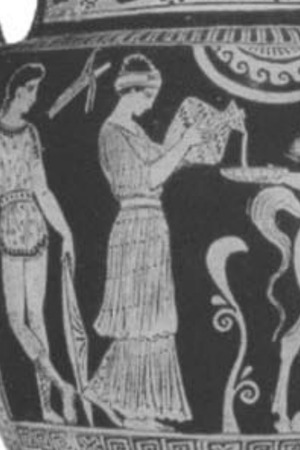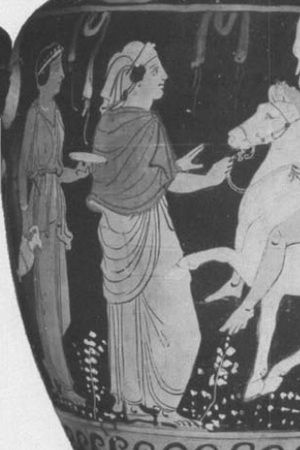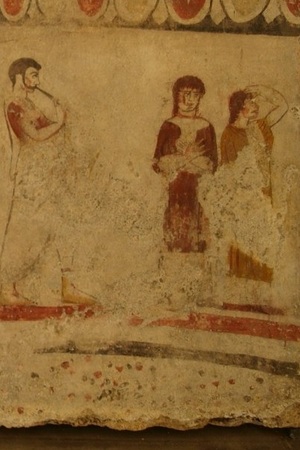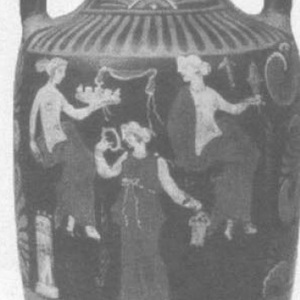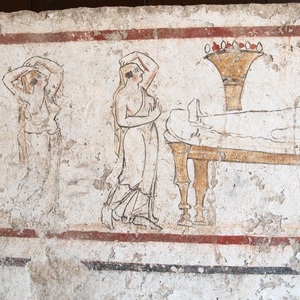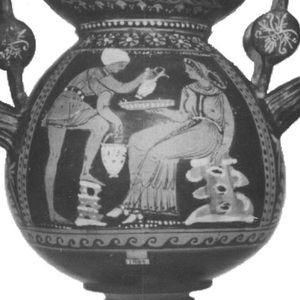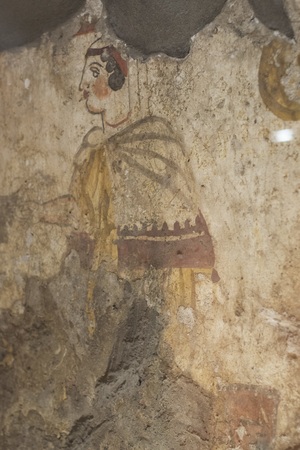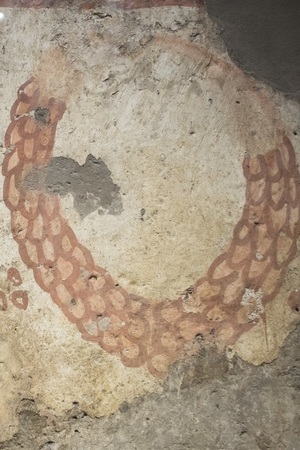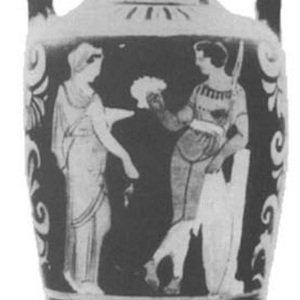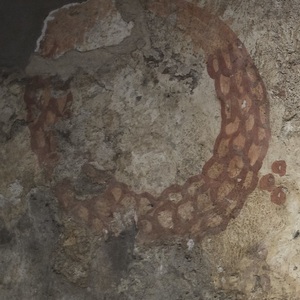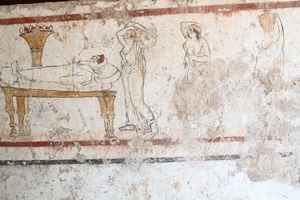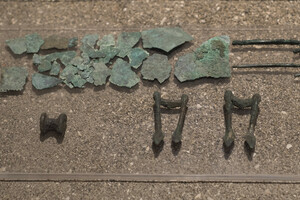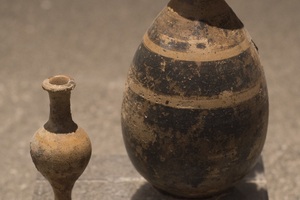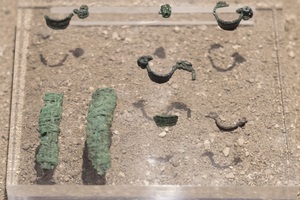Samnite Women
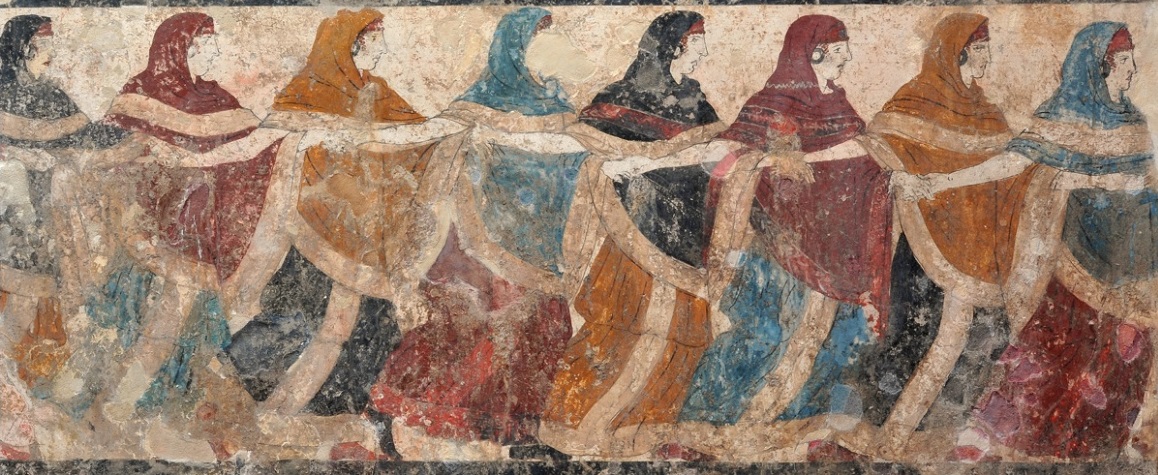 Painted slab depicting a funeral dance from Ruvo (Tomb of the Dancers). Inv. No. 9357. 5th-4th centuries BC.
Painted slab depicting a funeral dance from Ruvo (Tomb of the Dancers). Inv. No. 9357. 5th-4th centuries BC.
The Samnites were an ancient Italic people whose women, like their men, represented a blend of Greek and Italic cultures in their material culture. This blend is primarily due to their geographical location in southern Italy. The majority of evidence regarding Samnite women's material culture dates from the 5th to the 3rd centuries BC, spanning from the decline of Etruscan influence to the Roman conquest of the Samnites.
The main differences in women's fashion compared to Roman and Greek styles are primarily reflected in the patterns on fabrics and headgear. Samnite women notably used various types of scarves and turban-like hats. Unlike Greek and Roman women, they likely dyed their fabrics in addition to embroidering them with various patterns.
Tunics (chitons), like those of Samnite men, varied in type and degree of Greco-Italic influence. There were Greek-style chitons with typical draping as well as tunics more similar to Roman styles. They were worn in different ways, including both fully covering options and styles with one breast exposed. Sometimes, they simply wore cloaks without covering their breasts at all.
Samnite women are generally depicted with branching hairstyles. Even when wearing headgear, visible locks are often shown as voluminous. Occasionally, they appear with fully loose hair, but typically it was gathered into a small bun at the back of the head or secured with headgear or other accessories. A few depictions show traces of cosmetics, particularly white and red makeup similar to what Roman women used.
Jewelry, according to illustrations, was simple in form, usually consisting of earrings, necklaces, or bracelet rings. Most finds are bronze, but gold was likely also used extensively.
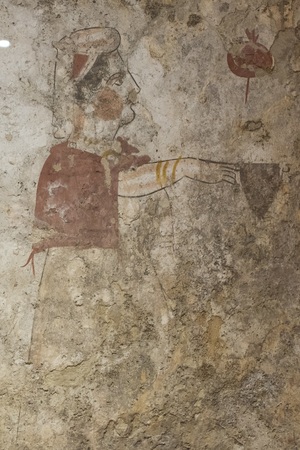 Tomb from Sarno No. 1801. Museo Archeologico della Valle del Sarno, Sarno, Campania, Italy. 4th century BC.
Tomb from Sarno No. 1801. Museo Archeologico della Valle del Sarno, Sarno, Campania, Italy. 4th century BC.Women's Clothing
Clothing of Samnite women included:
- Headgear
Decorating:
- Earrings
- Necklace
Reconstruction
To better understand the complete image of a Samnite woman, it is easiest to start with the image of an ancient Greek girl. There are very few archaeological finds specific to Samnite women, so one should rely on illustrative sources. These sources also allow for the reconstruction of simple stylized earrings, necklaces, and bracelets. For fabrics, linen or thin wool with plain weave is most suitable. As a key element that adds distinctive Samnite features, one should include women's headgear and incorporate typical Samnite patterns into the clothing. Footwear should also be reproduced based on illustrations, possibly drawing on Greek and Roman styles for guidance.
Related topics
Samnites-literature, Samnite Warrior, Samnite Wars, Women in Ancient Greece, Women in Ancient Rome, Fabrics in Antiquity
Literature

 Gallery
Gallery







 Samnite archaeological non-military finds
Samnite archaeological non-military finds






